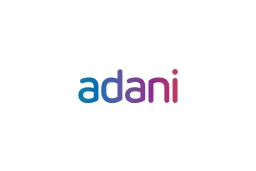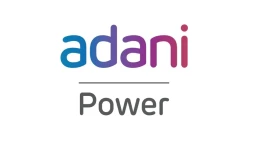Growth and Value Investing: Finding Your Fit
Investing in the stock market involves navigating a diverse landscape of strategies, each with its own merits and approaches. Among these, growth and value investing stand as prominent methodologies, each offering distinct paths to financial success. In this intricate investment arena, understanding the nuances between growth and value strategies becomes crucial in finding your tailored approach.
This exploration delves into the core principles of growth and value investing, aiming to shed light on their differences, advantages, and the elements that define a successful fit for individual investors. Whether you're drawn to the promising prospects of burgeoning companies or the stability of established undervalued stocks, discovering your alignment within these investment philosophies can be the key to maximizing your portfolio's potential.

What is Growth Investing?
Growth investing zeroes in on acquiring shares in early-stage, high-potential companies experiencing rapid financial expansion. Instead of prioritizing consistent dividends favored by income investors, this strategy targets capital appreciation, focusing on the sustained escalation of investment value.
In today's market landscape, growth investments extend beyond tech giants like Tesla, Amazon, and Facebook. Even established entities like Home Depot fall under this category due to their ongoing growth trajectory. Understanding a company's life cycle is pivotal in grasping the essence of growth investing. During its nascent phase, a company typically witnesses substantial revenue and profit gains, channeling these earnings back into fueling further expansion rather than distributing dividends.
As these companies progress and their markets mature, the pace of revenue and profit growth stabilizes. Once a company reaches full maturity, this growth further decelerates. At this stage, many companies shift focus, allocating profits to shareholders through dividends as market opportunities begin to dwindle.
What is GARP Investing?
GARP investing, standing for Growth at a Reasonable Price, strives to strike a balance between growth potential and fair valuations. This approach targets companies exhibiting growth prospects aligned with their intrinsic value, a strategy popularized by renowned investor Peter Lynch.
Forecasting growth for evolving industries or budding companies—central to growth investing—poses a significant challenge. The ability to predict future growth, especially for younger firms in rapidly changing sectors, remains intricate. Even if growth forecasts are estimated reasonably, the crucial question arises: What price is justifiable for that predicted growth.
GARP investors tackle these uncertainties by employing the PEG (Price/Earnings to Growth) ratio, which gauges a company's value concerning its growth potential. The PEG ratio is calculated by dividing the P/E ratio by the expected growth rate. A value of one or less implies that the stock is reasonably valued, while a result above one suggests overvaluation.
For instance, consider a stock trading at $100 per share, with earnings at $10 per share and an anticipated growth rate of 20%. This scenario yields a PEG ratio of 0.50 ($100 / $10 / 20), signifying a reasonably priced stock for a GARP investor.
In contrast, envision a stock trading at $300 per share, with identical earnings of $10 and an expected growth rate of 20%. This results in a PEG ratio of 1.5 ($300 / $10 / 20), indicating overvaluation and surpassing the bounds of attractiveness for GARP investors.

Growth Investing vs. GARP Investing
In the realm of investment, growth-oriented companies often display seemingly lofty valuations, typically gauged through standard metrics like the price-to-earnings (P/E) ratio and price-to-book (P/B) ratio. These metrics sometimes reveal significantly high figures, indicating substantial overvaluation.
Consider the scenario witnessed in mid-September 2020, where Amazon, a standout in growth investing, showcased a remarkable P/E ratio of 128 alongside a staggering P/B ratio exceeding 22.
Despite these exorbitant valuations, growth investors concentrate on the anticipated future growth prospects of such companies. They prioritize potential future growth over present high valuations, betting on substantial future returns. Yet, there are lingering concerns about the sustainability of this strategy, questioning the wisdom of prioritizing "growth at any cost."
In response, some investors opt for GARP (Growth at a Reasonable Price) investing, which seeks out growth-oriented companies that demonstrate more balanced valuations amid the landscape of soaring valuations in the market.
Growth Investing vs. Value Investing
Growth investing emphasizes companies that exhibit accelerated revenue, profit, or cash flow growth rates, while value investing targets established firms priced below their intrinsic worth. GARP (Growth at a Reasonable Price) investors blend these approaches, seeking growth companies with attractive valuations.
Over the long term, value investing has historically outperformed growth investing. However, recent trends show a reversal, with growth investing surpassing value investing in performance. In the last 25 years, growth mutual funds delivered returns of 1,072%, eclipsing the 624% returns of value mutual funds since 1995.
Examining Vanguard index funds reflects this trend. The Vanguard Value Index Fund (VVIAX) has averaged 6.18% annual returns since its inception in 2000. In contrast, the Vanguard Growth Index Fund (VIGAX) has averaged 8.10% annual returns over the same period, demonstrating growth's recent outperformance.
Also read: Best Value Stocks in India 2023
The Bottom Line
Cultivating a balanced portfolio with both growth and value investments may mitigate risks and enhance returns, leveraging the strengths of each strategy. Understanding the market conditions and the specific goals of your investment journey is pivotal in determining the optimal mix between growth and value strategies for a resilient and prosperous portfolio.
Follow us on Instagram.









